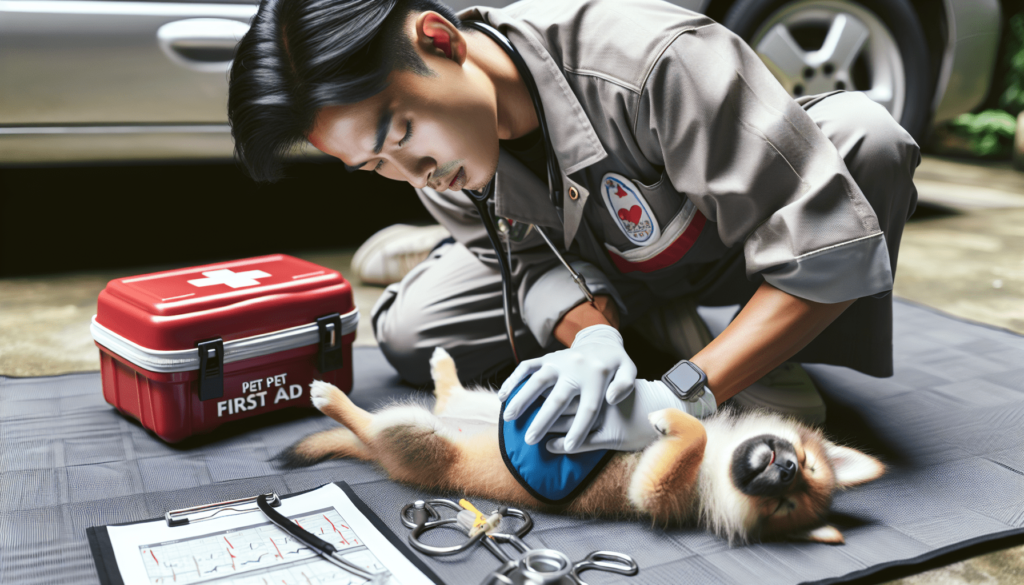Are you prepared to handle a pet emergency?
Taking care of our furry friends is a responsibility that many of us take very seriously. While we take all the necessary precautions to keep our pets safe, accidents and emergencies can happen. Do you know what to do in case of a pet emergency? In this guide, you will learn everything you need to know about pet CPR and first aid.

What is Pet CPR?
Pet CPR, or cardiopulmonary resuscitation, is a life-saving technique that can help revive a pet that has stopped breathing or has no heartbeat. Just like in humans, performing CPR on a pet can make a crucial difference in saving their life. Understanding the basics of pet CPR is essential for all pet owners.
Why is Pet CPR important?
Knowing how to perform CPR on your pet can mean the difference between life and death in an emergency situation. By learning how to properly administer CPR, you can provide immediate assistance to your pet while waiting for professional help to arrive.
How does Pet CPR work?
Pet CPR involves a series of chest compressions and rescue breaths to help oxygenate the blood and circulate it throughout the body. By providing artificial ventilation and circulation, you can increase the chances of survival for your pet in a crisis.
When to perform Pet CPR?
It’s vital to recognize the signs that indicate your pet needs CPR. If your pet is unconscious, not breathing, or has no pulse, it’s crucial to act quickly. In any situation where your pet is in distress and requires immediate attention, performing CPR may be necessary.
Signs your pet needs CPR
- Unconsciousness
- Difficulty breathing
- No heartbeat
- Blue or pale gums and tongue
Remember, early intervention is key to a successful outcome when performing CPR on your pet.
How to perform Pet CPR
Performing CPR on a pet can be a daunting task, but with the right knowledge and preparation, you can potentially save your pet’s life. Follow these steps to administer pet CPR effectively:
Step 1: Check for responsiveness
Before starting CPR, ensure that your pet is unresponsive. Gently shake them and call their name to see if they respond. If there is no movement or response, proceed to the next step.
Step 2: Check for breathing and pulse
Check if your pet is breathing normally by observing their chest movements. Place your hand on their chest to feel for a heartbeat. If there is no breathing or pulse, it’s time to start CPR.
Step 3: Position your pet
Place your pet on a flat surface with their right side facing up. Ensure that their head is in a neutral position to maintain a clear airway.
Step 4: Perform chest compressions
Interlock your fingers and place the heel of your hand over the widest part of your pet’s chest. Perform compressions at a rate of 100-120 per minute. Be sure to press down firmly but gently to avoid causing injury.
Step 5: Provide rescue breaths
After every 30 compressions, tilt your pet’s head back gently and cover their nose with your mouth. Provide two quick breaths and watch for the chest to rise. Continue the cycle of compressions and breaths until your pet shows signs of recovery or until help arrives.
What to do after performing Pet CPR
After administering CPR to your pet, it’s essential to seek immediate veterinary care. Even if your pet shows signs of improvement, they may still require medical attention to prevent further complications. Contact your veterinarian or an emergency animal hospital as soon as possible for further evaluation and treatment.
When to stop CPR
If your pet shows signs of recovery, such as breathing or movement, you can stop CPR. However, if there are no signs of improvement after 20-30 minutes of CPR, it’s best to discontinue and seek professional help.
Monitoring your pet’s vital signs
After performing CPR, monitor your pet’s vital signs, such as breathing, pulse, and responsiveness. Keep them warm and comfortable while waiting for medical assistance to arrive.

First Aid for Pets
In addition to knowing how to perform CPR, pet owners should also be familiar with basic first aid techniques. Being prepared for common pet injuries and emergencies can make a significant difference in your pet’s well-being.
Creating a pet first aid kit
Having a well-stocked first aid kit for your pet is essential in case of emergencies. Your pet first aid kit should include:
- Bandages and gauze
- Antiseptic wipes
- Tweezers
- Scissors
- Sterile gloves
- Emergency contact numbers (vet, animal poison control)
- Any medications prescribed for your pet
Common pet injuries
Pets can be prone to various injuries, such as cuts, burns, insect bites, and poisoning. Knowing how to address these common injuries promptly can prevent further complications and provide relief to your pet.
Handling minor wounds
If your pet sustains a minor cut or wound, clean the area with antiseptic wipes and apply a sterile bandage to protect the wound. Monitor the wound for signs of infection, such as redness, swelling, or discharge.
Managing burns
In case of burns, immediately flush the affected area with cool water to minimize damage. Avoid using ice or ointments on the burn as they may worsen the condition. Seek veterinary care for severe burns or if the burn affects a large area.
Dealing with poisoning
If you suspect your pet has ingested a toxic substance, contact your veterinarian or animal poison control immediately. Keep the packaging of the poisonous substance for reference and provide details on the amount ingested and your pet’s symptoms.
Conclusion
Being prepared for pet emergencies is an essential part of being a responsible pet owner. By learning how to perform pet CPR and basic first aid, you can provide immediate assistance to your pet in critical situations. Remember, acting quickly and confidently can make a life-saving difference for your beloved furry companion. Stay informed, stay prepared, and keep your pet safe and healthy.

